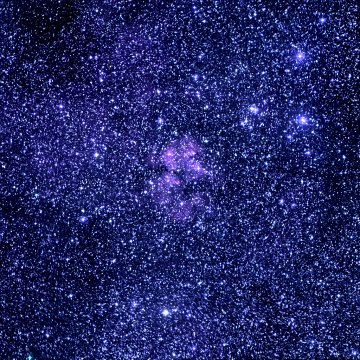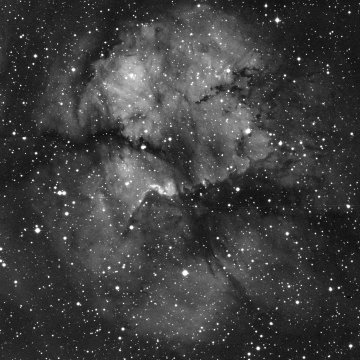Sensitive hydrogen-alpha surveys are revolutionising our view of the night sky. Douglas Finkbeiner has combined three sensitive but low resolution surveys into one fascinating all sky image that I've used as the basis for a hydrogen-alpha commentary.
Even more important than the big picture low resolution surveys are the higher resolution surveys carried out closer to the galactic plane. For several years, the only one available has been the AAO/UKST H-alpha survey of the southern sky, accessible through a set of digitally scanned photographic plates called SuperCOSMOS. This survey was imaged by the UK Schmidt camera at the Anglo-Australian Observatory in Siding Spring, about 500 kilometres north west of Sydney. I have used the SuperCOSMOS data to improve the images of Sharpless, Gum and RCW nebulae on this site that are visible from the southern hemisphere.
Until recently there was no northern hemisphere equivalent to SuperCOSMOS, which meant that detailed hydrogen-alpha images were not available for important Milky Way regions like Cygnus, Cassiopeia and Cepheus. This has now changed.
IPHAS is the northern hemisphere equivalent of SuperCOSMOS. The IPHAS survey was carried out by the Wide Field Camera on the 2.5 metre Isaac Newton Telescope, part of the Isaac Newton Group of Telescopes near La Palma in the Canary Islands. It has captured amazingly detailed images of northern hemisphere nebulae.
Here's an example. The mysterious HII region Sh 2-124 is located at a distance of about 2600 parsecs towards the north east edge of the Cygnus complex. Almost nothing has been written about this nebula in the scientific literature. In the DSS2 (Digitized Sky Survey) image shown first you can discern a faint amount of nebulosity around the brighter stars. In the far more detailed IPHAS image shown second, however, Sh 2-124 emerges as a spectacular nebula with dividing dust lanes that might be as famous as the Trifid nebula if it were as bright.

Unlike SuperCOSMOS, there is no easy to use website to download IPHAS images. The official recommended software to retrieve IPHAS images is Astrogrid. As I do not have fancy graphics software to properly manipulate the FITS images provided by Astrogrid, I use a downloaded version of Aladin to view and manipulate the FITS files and convert them to a more widely-supported graphics format for further processing. Fortunately Astrogrid can pipe images directly to Aladin making them function essentially as one application.
Although I've found Astrogrid and Aladin a bit tedious to use, I remind myself that creating images using this software is infinitely easier than using a telescope to capture my own!
